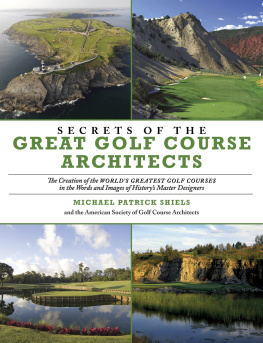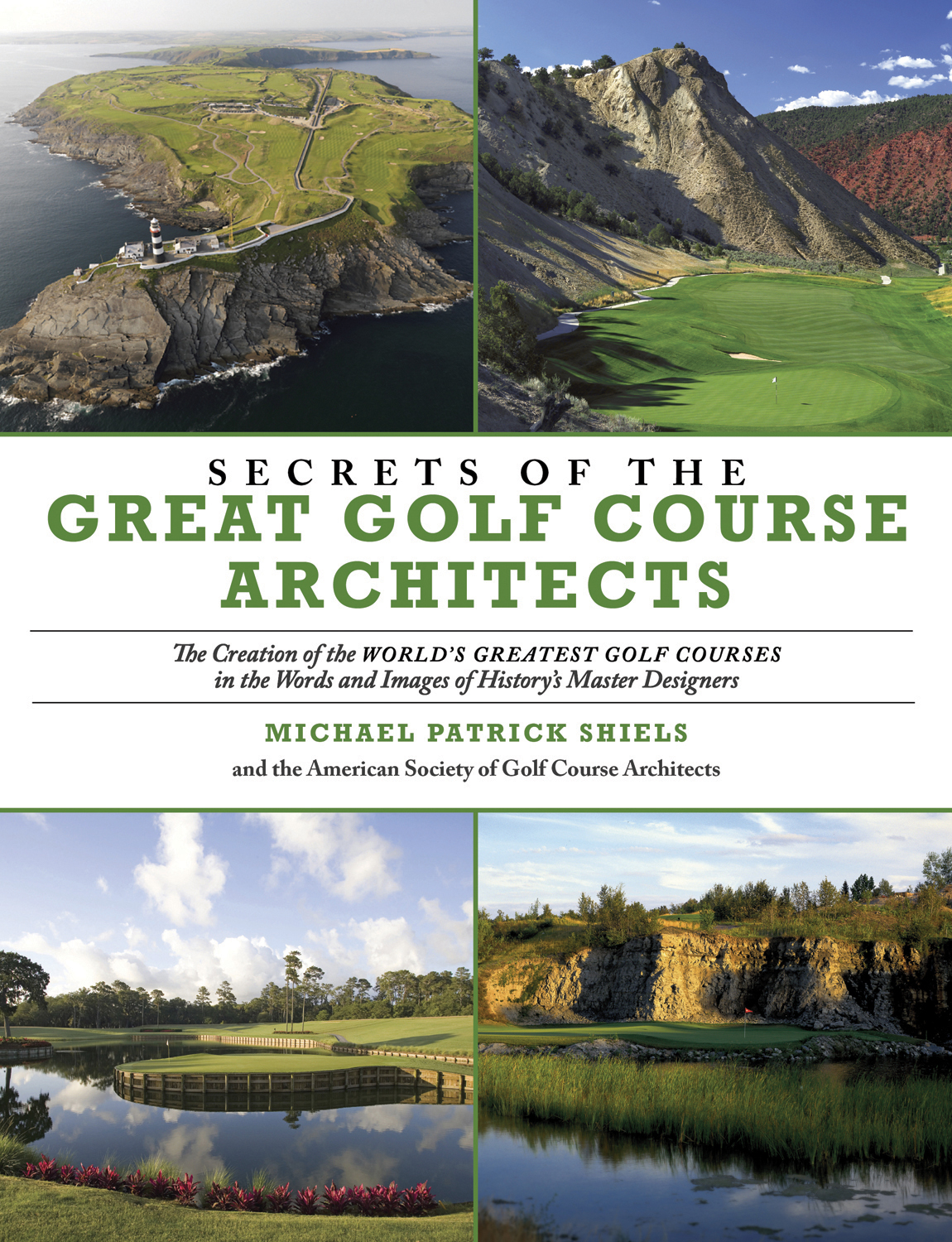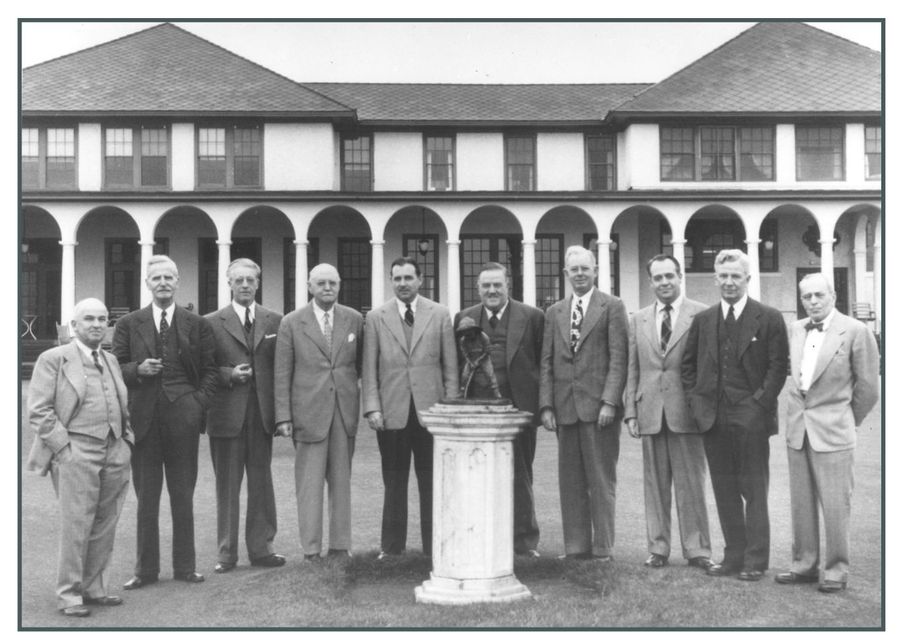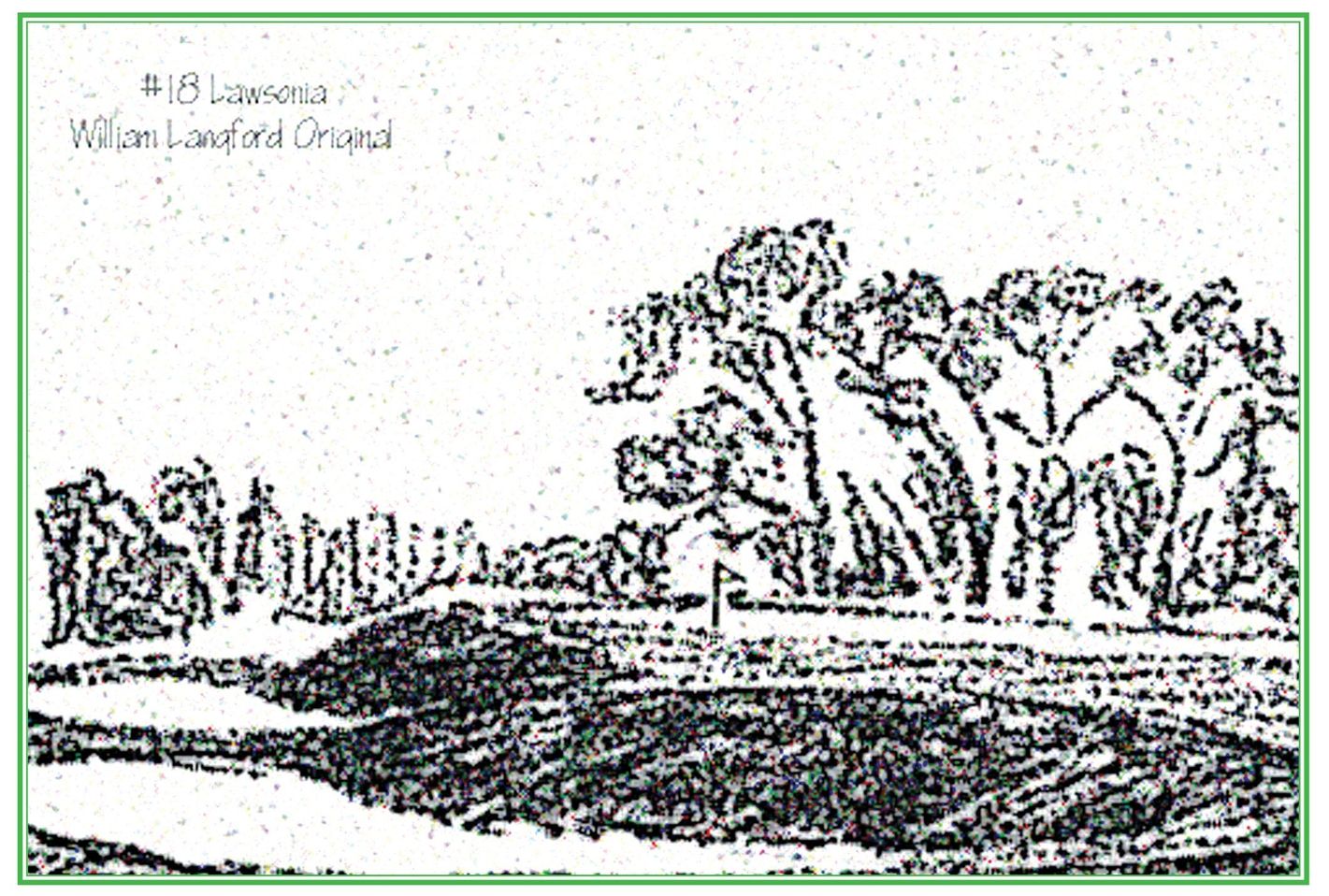ACKNOWLEDGMENTS
Steve Forrest, ASGCA for coming up with the idea for this book and introducing me to ASGCA and its members
Don Knott, ASGCA chairman of the ASGCA Foundation, who embraced the concept and approved funding for the writing and editing of the book
Greg Muirhead, ASGCA; Bruce Charlton, ASGCA; Doug Carrick, ASGCA, and Erik Larsen, ASGCA, of the ASGCA Executive Committee for approval and support of this project
Chad Ritterbusch, Aileen Smith, and Therese Swenson, ASGCA staff
Jennifer Semetko and Paul Keehn
All ASGCA members who allowed me to probe their memories and come up with the great stories that make up this book, and who submitted their photographs and drawings to enhance those stories
ABOUT THE AUTHOR
M ichael Patrick Shiels has authored Golf s Short Game for Dummies and collaborated on books with Ben Wright, Arthur Hills, Larry King, and Donald Trump. His first book, an autobiography of Radio Hall of Fame host J. P. McCarthy, was a number-one regional bestseller. His golf and travel articles have appeared in publications worldwide, and he has twice been named the Michigan Association of Broadcasters Network Radio Personality of the Year.
Michael Patrick Shiels interviews Arnold Palmer at the 2008 Senior Skins Game on Maui
ABOUT ASGCA
W hen the American Society of Golf Course Architects (ASGCA) then-president Steve Forrest, ASGCA, announced at the groups sixty-first Annual Meeting in Atlanta that he hoped to shepherd through a book of stories of each members most memorable day, he almost immediately listened to a dozen or so candidates for inclusion. ASGCA members love a great story and enjoy nothing more than gathering at the Annual Meeting and swapping the latest yarns.
But, the group is much more than a bunch of convivial storytellers. Its a professional membership association made up of the most qualified, experienced golf course architects in the world. From its beginning in 1947 when fourteen golf course architectsincluding Donald Ross and Robert Trent Jonesheld their first meeting in Pinehurst, North Carolina, ASGCA has sought to raise awareness of the profession and advance new design concepts and construction techniques by gathering and sharing ideas. Each member has designed and brought to opening at least five eighteen-hole equivalents, though most average in the dozens of layouts. The application process is detailed, peer-reviewed, and typically takes two years to complete, resulting in members with the most respected professional standing.
Today, ASGCA is one of the members of the Allied Associations of Golf, which is dedicated to growing and preserving the game worldwide.
Bruce Charlton, ASGCA
2008-2009 President,
American Society of Golf Course Architects
The Founding Fathers of ASGCA, 1947.
American Society of Golf Course Architects
125 N. Executive Drive, Suite 106
Brookfield, WI 53005
(262) 786-5960 www.asgca.org
CHAPTER 1
HORSES FOR COURSES
PAUL ALBANESE
Albanese has redesigned classic William Langford holes.
P aul Albanese captained the Cornell University golf team before earning a masters in landscape architecture at Harvard. During his tenure at Harvard, Paul received a prestigious Penny White grant for travel to Scotland to study classic precedents in golf architecture, as well as how the golf landscapes of Scotland function as vital components of its society. Paul is also the director of Golf Course Architecture at the Edinburgh College of Art in Scotland. After working with Michigan golf architect Jerry Matthews, he partnered with Chris Lutzke, a Pete Dye disciple, to found Albanese & Lutzke. Hes worked on the following golf course designs: Timberstone Golf Course in Iron Mountain, Michigan; Mill Creek Golf Club in Rochester, New York; Quail Ridge Golf Course in Ada, Michigan; the Traditions Golf Club in Edmond, Oklahoma; Cana Hills Golf Club in the Dominican Republic; and the Equestrian Club in Marrakech, Morocco.
I was excited to work on the restoration of the bunkers at Christiana Creek Country Club in Elkhart, Indiana. This was a Golden Age William Langford design, and our goal was to authentically restore the bunkers in his style.
During the process, the construction managers, shapers, and I were discussing the forms of the bunkers.
Back in the day, I explained, the original bunkers were built using horses.
My construction manager quipped, If we want to be authentic, thats how we should do it!
The room was full of chuckles.
No, really, he maintained. I can find some horses to do the work.
Lets do it, I agreed.
And we did.
Even though the idea was tongue-in-cheek, the actual process of constructing a couple of bunkers with horses was an eye-opening experience. It truly gave me an appreciation for how the old architects from the Golden Age were able to create the unique and interesting forms of that era.
This was a Golden Age William Langford design, and our goal was to authentically restore the bunkers in his style.
CHAPTER 2
BULL FIGHTING
BILL AMICK
Traditional courses send players out and bring them back in as displayed by holes 10 and 18.
B ill Amick earned his degree in turfgrass management under a USGA Green Section Grant before he entered the U.S. Air Force, where he supervised the maintenance and operation of the base golf course. Amick opened his own practice in 1959. He was elected president of the American Society of Golf Course Architects in 1977, and has since been named a fellow in the ASGCA. Amick now specializes in smaller, less expensive golf courses such as nine-hole, executive, and par-3 courses, which appeal to developers because of the reduced land requirements, water usage, and environmental impact. These courses also appeal to juniors, beginners, people with disabilities, and those who appreciate faster play. Some of his works include Halifax Plantation Golf Club in Ormond Beach, Florida; Vineyards Country Clubs south course in Naples, Florida; Sky Meadow Country Club in Nashua, New Hampshire; and Gut Heckenhof Golf and Country Club in Germany.
Early in my career, I was designing a new course near Tallahassee, Florida, and I went on a walking tour of the property with the housing and course developer and several other men. The property had massive live oak trees scattered across rolling hills, which provided an ideal setting for laying out an attractive golf course. The eventual result would be three interchangeable nine-hole loops radiating from and returning to a clubhouse atop a prominent hill near the center of the property.

















